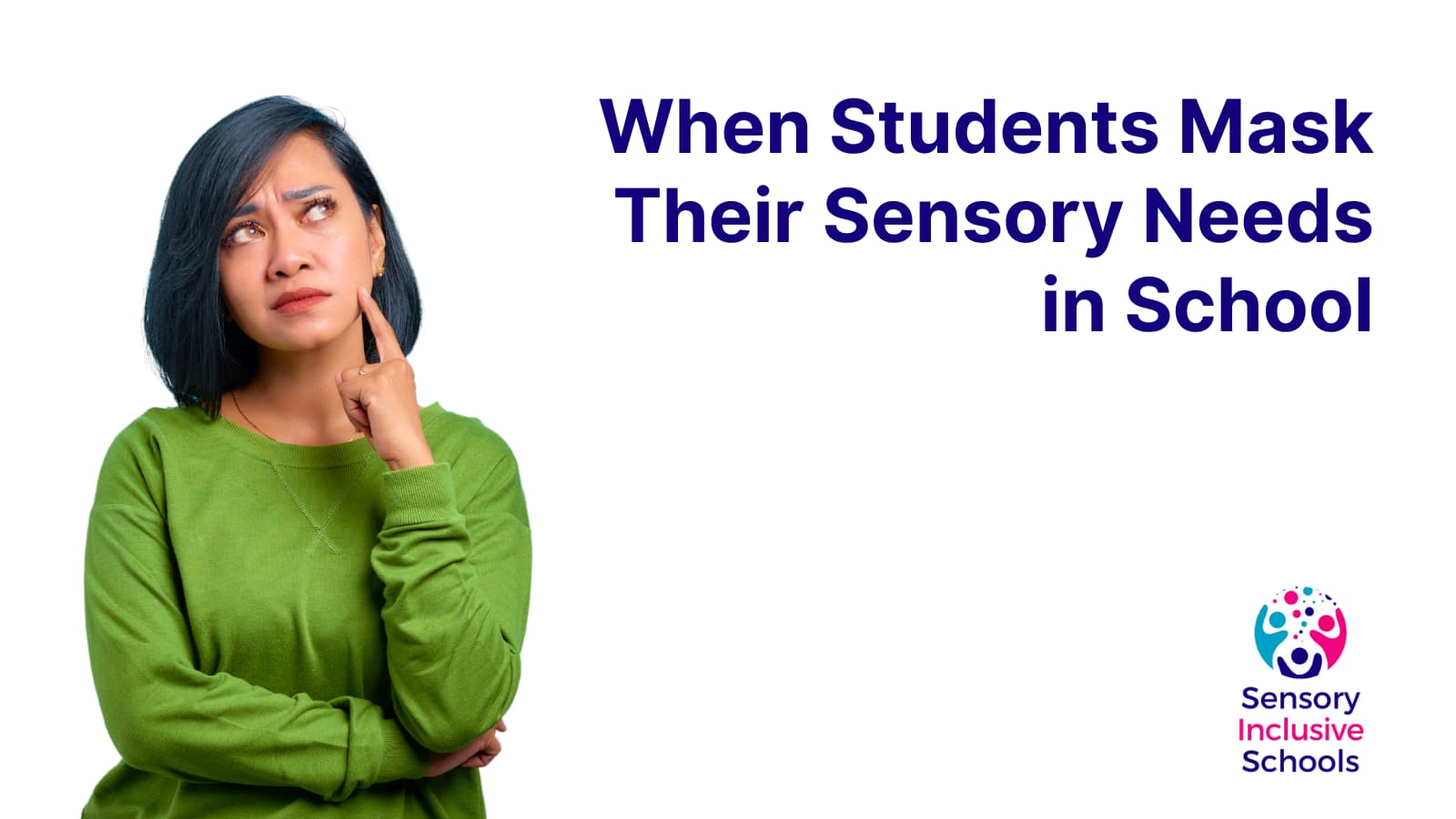Build Your Skills
...with our online sensory training for schools — practical, evidence-based courses to help every learner thrive.
15 October 2025

Have you ever taught a student who seems calm and focused all day — yet parents mention they’re overwhelmed or exhausted by the time they get home? That student might be masking.
Masking happens when a learner consciously or unconsciously hides their natural sensory responses, emotions, or behaviours to fit in or avoid standing out. Many neurodivergent students do this instinctively as a way to cope with busy, unpredictable environments, like classrooms or other busy spaces in school. When you consider that 1 in 6 children have sensory processing differences which impact their school experience, it’s very likely that there are learners masking their struggles in your classroom.
On the surface, these students may appear to manage well — sitting quietly, joining in group activities, and following routines. But what you don’t see is the effort this takes. They’re constantly monitoring themselves, pushing through sensory discomfort, and trying to meet social expectations. By the end of the day, they can be emotionally and physically drained.
The challenge for school staff is that masking often hides genuine sensory and emotional needs. A student who appears settled might still be struggling with noise, lighting, the pace of the lesson or the physical coordination demands of the task. That’s why creating a school where it’s safe to express sensory preferences, for example, offering quiet corners, flexible seating, or movement breaks, is so important.
When students don’t feel they have to hide how they experience the world, they have more energy to engage, learn, and connect.
For more insight and some simple, evidence-based strategies to support all learners, download our free guide: Sensory-Based Behaviour in the Classroom.